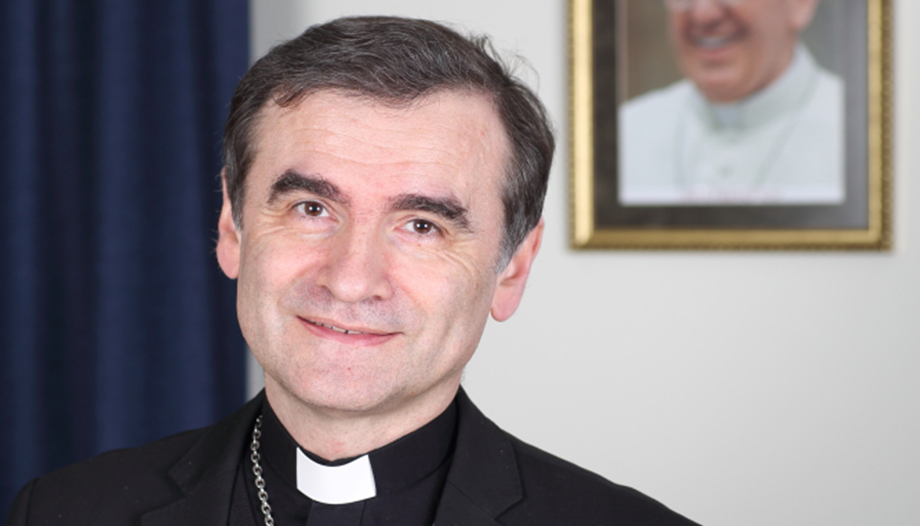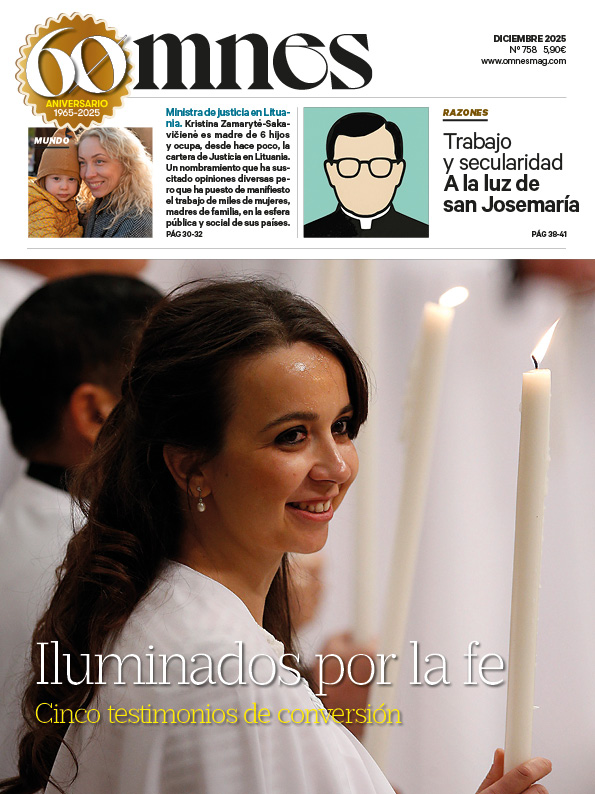The Apostolic Administration of Estonia is 100 years old. It was on November 1, 1924 when this land ceased to be part of the Latvian archdiocese of Riga and began its journey. It is one hundred years, but in its first half, the presence of the Catholic Church in Estonia was almost non-existent, due to the Soviet occupation that the country suffered from 1940 to 1991. Since September 26, 2024, the Apostolic Administration of Estonia is the Diocese of Tallinn.
The former Apostolic Administrator since 1996, the Frenchman Philippe Jourdan, is now bishop of the new diocese of this Baltic region, which, as a second name, has the name of Maarjamaa o Land of MaryThe Catholic presence in the country since the thirteenth century, which has experienced many vicissitudes up to the present day, is a reminiscence of the Catholic presence. In a country that has been secularized for generations, the faith is making inroads and, every year, dozens of baptisms and conversions bear witness to this.
What is the reality of the Catholic Church in Estonia?
-According to the latest census of 2021, approximately 0.8 % of the Estonian population is Catholic. It may not seem like much, but for us it is a lot.
In the 1970s a German did a doctoral thesis on the history of the Church in Estonia in the 20th century. He did it very well, conscientiously. Among the things he pointed out was how, in the early 1970s, there were five or six Estonian Catholics in Estonia. Not fifty or sixty, but five or six. I was able to meet at least two of these six. They were already very old when I arrived; I was going to visit them in the old people's home where they were. You cannot imagine what an old people's home was like in a post-Soviet society of the 1990s like ours: terrible. Well, from those five in the 1970s to today we have grown more than a thousandfold. It has been a great grace of God.
How has the Estonian faith survived throughout its history?
-Although we are now celebrating 100 years of Apostolic Administration, this does not mean that Catholics arrived in 1924. We have had a Catholic presence in Estonia since the 13th century, but the Church in Estonia - in other northern European nations - almost completely disappeared with the Lutheran Reformation in the 16th century. Catholicism was uprooted and banned for three centuries.
Interestingly, in Estonia at the beginning of the 19th century the Catholic Mass was celebrated again thanks to a Spanish nobleman, who served in the army of the Russian Tsar (at that time this land was part of the Russian Empire) and was the military governor of Tallinn. This nobleman asked the Tsar for permission to celebrate Catholic Mass in Tallinn for the Polish soldiers of the army.
The first Estonian converts to Catholicism date back to the 1930s; but shortly afterwards, in 1940, the Soviet occupation came. Many fled, and others were killed or deported, like my predecessor Eduard Profittlich, who died in prison.
The Catholic Church survived, but with great suffering for more than forty years. During this time there was only one priest, strictly guarded by the Soviet police, for the whole country.
A man who converted in the 1980s recalled that, after being baptized with his mother, when the priest went to register them, she asked if it was not risky to put their names in the parish register because, if they were discovered, for example, her son would not be able to access higher education. This priest told them that when the police called him, he came with a yellow and a red sock and when they saw him, they took him for a madman and threw him out on the street. In this way he protected himself and the Catholics.
Indeed, the Estonian Catholics of that time were heroes, some even martyrs.
In the 1940s, 20 % of the Estonian population was deported to Siberia. We are talking about one in five people. Not all of them died, but a great many did.
There is no family in Estonia that has not had deportees, and some family members have died in deportation. That marks a people for generations. That is why the possible beatification of Profittlich is so significant for the people here. Before God it is obvious that all saints and blessed are on an equal footing, but the life of one of them may have a special significance because of the events they have lived through.
Eduard Profittlich decided to share the fate of a large part of the Estonian people. He could have escaped, but he stayed and experienced what many Estonians experienced.
This beatification is a way of recognizing what has happened in this country and also to give a sense of hope. We should not stop at the fact that these people have died, but that even in those concentration camps, in the prisons, they knew how to live with hope and faith.
Last year more than fifty baptisms were performed Is the Estonian population receptive to the faith?
-Estonian society is a very pagan society. But the reality is that it has remained the same for tens of years.
Currently, 25-30 % of the population consider themselves believers, followers of some religion; the rest have no religion. When I arrived in 1996, the percentage was the same. Unfortunately, in Europe, secularization has advanced in these twenty years, but we have remained at the same level. Today, many countries are not far behind us in these figures. On the other hand, the population here is receptive; there are actually few atheists.
There are many people who claim to believe in something but do not recognize themselves in a constituted Church, especially in the Lutheran Church.
When Pope Francis was here in 2018, the Nuncio acknowledged to me that it had been the best part of his trip through the Baltic countries. The Pope had been told that Estonia was the hard part of the trip, after Lithuania, which is Catholic, and Latvia, which is half and half. But the people came to see him enthusiastically, partly because the "Pope's" visit to the Baltic countries was the most important one.Pope of Rome" as they say here, he came to see them and, moreover, because of the Pope's ability to "get into the pocket" of the people, especially non-Catholics. The president of the nation was known for not wanting to set foot in a church of any denomination. The Pope told her a Vatican joke, that John XXII was asked how many people worked in the Vatican, and he replied "about half". When the president, who may have had a similar experience, heard this, she laughed a lot and everything was very relaxed. When they left, the president said to me: "What the Pope has told me is very important to me, it helps me a lot.". On other occasions, she herself has said "the only one man of God" [as pastors or priests are called here] who tells me something is the Pope".. That was the impression of many Estonians in those days.
Every day there are a good number of people coming to the faith. In recent years, moreover, we have noticed that more and more young people are coming: people between 20-30 years of age, asking to be baptized or to be received into the Catholic Church.
How are relations with the Lutheran Church?
-We have very good relations. There is an intense ecumenical life here. In Estonia there is a Ecumenical Council of Churches. The president is the Lutheran archbishop, and I am the vice president. We see and talk to each other frequently.
The Lutheran Church in Estonia has positions very close to those of the Catholic Church on family issues, marriage between a man and a woman, or the defense of life. We try to give common witness on these moral issues. Last year I went, together with the Lutheran archbishop, to visit the parties represented in parliament. They don't always listen to us, of course, but the important thing is that we go together to dialogue with them and that they see the position of Christians on many issues. Another example is that when Pope Francis came, in 2018, as our temples are small, the Lutherans let us have their churches for the meetings.
Estonia was one of the first countries to consecrate itself to Our Lady. Is there anything left of that Marian presence?
-The curious thing is that, although Estonia is a country with a Lutheran tradition and the majority of the population has no religion, in the Estonian language the name "..." still exists.Land of Mary". (Maarjamaa) as the second name of Estonia. Just as in France they say "the hexagon" to refer to the country, here - even people who have no faith - say that "the hexagon". Land of Maryno problem. The Cardinal of Riga commented to me in astonishment how it was possible that "for those Estonian pagans, the land of Mary is so important, and we Latvians have lost it.".
For some reason, Our Lady has remained in the language even after the Reformation. I have researched the consecration of Estonia to Our Lady by Innocent III, and apparently we are the second country in the world consecrated to Our Lady. The first was Hungary in the 10th century, then Estonia in the 13th century, and then all the others: Spain, France, Italy...
One of the annual events is the pilgrimage to Viru Nigula. How did it come about?
-It was an initiative that was born in the last Holy Year, in 2000. When Pope St. John Paul II asked that pilgrimages to shrines of Our Lady be organized in each region, we asked ourselves where we could go.
In that search, we found that in the Middle Ages there was a 12th century church dedicated to the Virgin, to which pilgrimages were made in the Middle Ages. There is evidence that people were still going, even 100 years after the Reformation, even though it was burned down. Lutheran pastors were outraged and even sent bailiffs to arrest the pilgrims. It seemed idolatrous to them, because they came to the ruins of the church of the Virgin and, on their knees, went around the temple three times.
We have been going to this place since the year 2000. We celebrate Mass in the Lutheran church of the village and from there we go in procession, with the image of the Virgin, to the ruins of the old sanctuary of Viru Nigula. It has not been possible to rebuild it, but we have put a stained glass window of the Virgin, very beautiful. It is not a very big sanctuary, but it is a good place to pray and one of the northernmost Marian sites in Europe.








